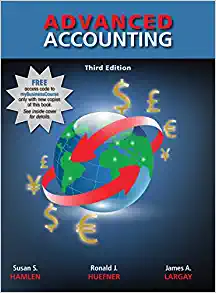Question
ONLY HAVE A QUESTION ABOUT ATTACHED SOLUTION>>> WHERE DOES THE $100 COME FROM IN THE PRODUCT MIX??? 1-4 C ost- Volume-Profit Analysis and Pricing in
ONLY HAVE A QUESTION ABOUT ATTACHED SOLUTION>>> WHERE DOES THE $100 COME FROM IN THE PRODUCT MIX??? 1-4 C ost- Volume-Profit Analysis and Pricing in the Airline Industry* (Edward Deakin, Adapted) Trans Western Airlines is considering a proposal to initiate air service between Phoenix, Arizona, and Las Vegas, Nevada. The route would be designed primarily to serve the recreation and tourist travelers who frequently travel between the two cities. By offering low-cost tourist fares, the airline hopes to persuade persons who now travel by other modes of transportation to switch and fly Trans Western on this route. In addition, the airline expects to attract business travelers during the hours of 7 A.M. to 6 P.M. on Mondays through Fridays. The fare price schedule, or tariff, would be designed to charge a higher fare during business-travel hours so that tourist demand would be reduced during those hours. The company believes that a business fare of $100 one way during business hours and a fare of $60 for all other hours would equalize the passenger load during business-travel and tourist-travel hours. To operate the route, the airline would need two 200-passenger jet aircraft. The aircraft would be leased at an annual cost of $10,000,000 each. Other committed costs for ground service would amount to $5,000,000 per year. Operation of each aircraft requires a flight crew whose salaries are based primarily on the hours of flying time. The costs of the flight crew are approximately $800 per hour of flying time. Fuel costs are also a function of flying time. These costs are estimated at $1,000 per hour of flying time. Flying time between Phoenix and Las Vegas is estimated at 45 minutes each way. The flexible costs associated with processing each passenger amount to $5. This amount includes ticket processing, agent commissions, and baggage handling. Food and beverage service cost $10 per passenger and will be offered at no charge on flights during business hours. The airline expects to recover the cost of this service on non-businesshour flights through charges levied for alcoholic beverages. Required (I) If five business flights and three tourist flights are offered each way every weekday, and ten tourist flights are offered each way every Saturday and Sunday, what is the average number of passengers that must be carried on each flight to break even? IN THE ATTACHED SOLUTION: WHERE DOES THE $100 COME FROM IN THE PRODUCT MIX????
Step by Step Solution
There are 3 Steps involved in it
Step: 1

Get Instant Access to Expert-Tailored Solutions
See step-by-step solutions with expert insights and AI powered tools for academic success
Step: 2

Step: 3

Ace Your Homework with AI
Get the answers you need in no time with our AI-driven, step-by-step assistance
Get Started


